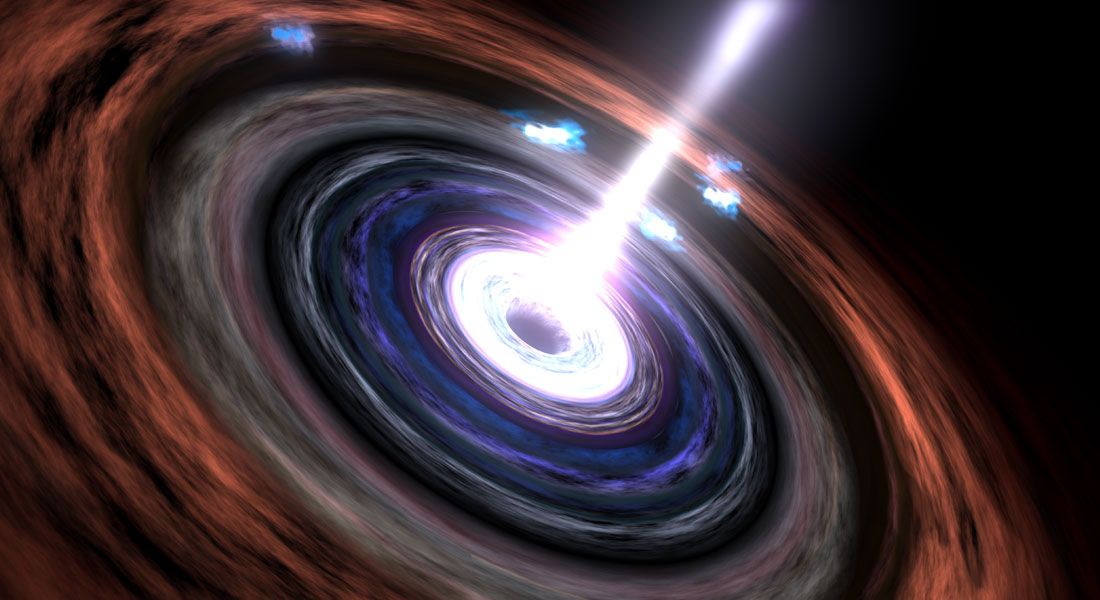Astrophysicists are thrilled about finding a source from where the cosmic ‘ghost particles’ originate
A magnificent research project located under the ice of the South Pole has found a connection between emission of the mysterious neutrinos and the active galaxies, blazars. One of the involved scientists at the University of Copenhagen tells that it is an important piece in understanding cosmic rays

Thousands of sensors are buried in the ice at the South Pole at a depth of 1500-2500 meters. It is the research station IceCube, a gigantic telescope built for observing the neutrino, an elementary particle popularly called the ghost particle.
There is a lot of excitement about the latest finding in astrophysics, as the origin of high energy cosmic neutrinos has been a mystery since its discovery in 2013, a discovery IceCube took part in as well. Scientists have for the first time been able to detect a connection between two particular astronomical events: The emission of neutrinos and flashes of light and electromagnetic radiation coming from the powerful engines/generators known as blazars.
The discovery that blazars are a source of neutrinos adorns the cover of the international journal Science Magazine this month. Assistant professor D. Jason Koskinen at the Niels Bohr Institute in the University of Copenhagen says that the observation adds a new piece to help solve an almost 100 year old puzzle. He is one of the IceCube-scientists that made the big finding. “For a long time now, we have been wondering where these elementary particles are created, and now we have strong evidence that blazars are a neutrino source. The finding is an important piece in the puzzle about our understanding of the universe and its most energetic and powerful objects”, he says.
Neutrinos are a mystery
Scientists all over the world are very interested in the behaviour of neutrinos, because they are both very hard to detect and thus examine, as neutrinos are almost massless and only interact weakly, and the second most abundant particle in universe.
“Neutrinos are excellent cosmic messengers, because they can travel through the entire cosmos without being deflected by magnetic fields or stopped by matter, and thus carry enormous amounts of knowledge about the creation of the universe and its mechanisms. This makes every discovery about neutrinos extremely important for further research”, says Markus Ahlers, Assistant Professor at the Niels Bohr Institute and IceCube scientist.
He explains that neutrino emission helps decode the complicated mechanisms taking place at particle accelerations and interactions in the extremely powerful energy generators, the blazars. Blazars are active galaxies, of which the cores are black holes that send out matter with a velocity close to the speed of light in our direction.
Links to scientific publications:
- “Multimessenger observations of a flaring blazar coincident with high-energy neutrino IceCube-170922A,” The IceCube, Fermi-LAT, MAGIC, AGILE, ASAS-SN, HAWC, H.E.S.S, INTEGRAL, Kanata, Kiso, Kapteyn, Liverpool telescope, Subaru, Swift/NuSTAR, VERITAS, and VLA/17B-403 teams. Science 361, eaat1378 (2018).DOI:10.1126/science.aat1378 (Link to the first scientific publication here >> )
- “Neutrino emission from the direction of the blazar TXS 0506+056 prior to the IceCube-170922A alert,” IceCube Collaboration: M.G. Aartsen et al. Science 361, 147-151 (2018). DOI:10.1126/science.aat2890 (Link to the second scientific publication here >>)

Subir Sarkar, professor, IceCube, Theoretical Astrophysics and Cosmology, Niels Bohr Institute, University of Copenhagen, Mob: +45 21 28 91 57, Email: sarkar@nbi.ku.dk
David Jason Koskinen, assistant professor IceCube, Discovery Center, Niels Bohr Institute, University of Copenhagen, Mob: +45 21 28 90 61, Email: koskinen@nbi.ku.dk
See also:
Contact
D. Jason Koskinen, Assistant professor
Niels Bohr International Academy
Theoretical Particle Physics and Cosmology
Blegdamsvej 17, 2100 København Ø.
Email: koskinen@nbi.ku.dk
Phone: +45 21 28 90 61
About Neutrinos
Neutrinos are elementary particles that are produced in radioactive (beta) decay, in nuclear power plants, in processes within the sun, and in violent astrophysical events like supernovae. It is the second most abundant particle in the universe. There are about 100 neutrinos per cubic centimeter even in the most remote parts of the universe, which were created in the Big Bang. It is also the least understood of the known elementary particles. Neutrinos only interact with other elementary particle via the so called weak nuclear force, as it doesn’t have any electrical charge.
The IceCube experiment consists of one cubic kilometer of ice containing thousands of round detector modules with a diameter of 33 cm. Every module has a photomultiplier tube and some electronics. The experiment is structured in 86 drilled holes, with the detection modules submerged between 1500 and 2500 meters below the surface of the ice at the south pole. Scientists from NBI are a part of the international team of more than 300 researchers, who work with the IceCube telescope.
